Cheek Reduction Surgery
Most people are happy with their cheeks. However, some can experience 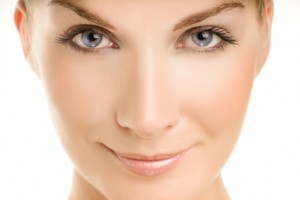 self-consciousness if they possess “chipmunk cheeks” – very round, plump or “chubby cheeks”. If this is the case, you may be a good candidate for a cheek reduction (buccal fat removal surgery). Buccal fat consists of pads of fat that augment the lower part of the cheeks. If the fat extends to the lower part of the cheeks and the jawline, it can give an unfavorable appearance.
self-consciousness if they possess “chipmunk cheeks” – very round, plump or “chubby cheeks”. If this is the case, you may be a good candidate for a cheek reduction (buccal fat removal surgery). Buccal fat consists of pads of fat that augment the lower part of the cheeks. If the fat extends to the lower part of the cheeks and the jawline, it can give an unfavorable appearance.
Fortunately, there are several options that are available to slim down your facial features. Buccal fat removal procedures help to reduce the size of your cheeks by removing excess fatty tissue which can create a more defined, sculpted look.
Note: Buccal fat removal should not be confused with facial liposuction (which can leave visible scars). However, in some cases, a mini-liposuction may need to be performed in conjunction with buccal fat excision (surgical removal). This may be the case where there is a large amount of fat to be removed. In most cases, the small incisions for the liposuction should heal in a few weeks.
First, you will be given your choice or your surgeon’s preference in anesthesia as discussed during your pre-surgery consultation. You may be given an oral sedative or valium prior to surgery which will cause initial relaxation. An IV (intravenous) for a saline drip to keep you hydrated, before and after surgery, may be inserted. This can also serve as means to introduce other medications, should the need arise. Having an IV inserted should only sting for a bit.
After the needle is injected into the vein, it’s pulled out and a little plastic tube (which is taped in place) remains in the vein. The IV can be placed in the crook of the elbow or the hand, depending on the size of your veins, in those respective locations.
The effects of the anesthesia are almost immediate, following the introduction of the liquid into the blood stream. If a sedative has been chosen, it will be administered through the anesthesia IV (either by hypodermic injection or through an additional drip mechanism.
Once the anesthesia has taken effect, the surgeon will make an incision (about 2 to 4 cm long) between the cheek and gums (maxillary vestibule), starting above the second upper molar towards the back of the mouth. The surgeon will use this incision to expose the large cheek muscle (buccinator muscle). The surgeon will then apply pressure (using his or her thumb) externally against your cheek right under your cheek bone causing the buccal fat to protrude through the incision. The necessary fat will be removed with forceps (or surgical tweezers), a small amount at a time. The total amount removed depends on the patient.
The surgical team then performs a standard sponge and instrument count and the incisions are closed with a non-dissolvable type suture. The doctor may also place an antibiotic-soaked piece of gauze between the upper molars and gums. A pressure dressing may also be placed around the patient’s head.
The patient is then wakened gently and brought into the recovery room where vital signs will be monitored. The patient’s release is dependent upon the individual but may take up to two hours. The face may feel tight and quite tender as the anesthesia wears off. A common reaction to anesthesia may also involve an emotional response.
Shivering may also occur and can be relieved with a warm blanket. Prescribed medication should alleviate any additional pain and discomfort. However, if you believe your pain to be out of the ordinary once you get home, call your cosmetic surgeon or the on-call staff immediately. You will need to be driven home, as you will not be able to see clearly and your judgment will be impaired due to the medications given.
Surgeons may also perform facial liposuction to remove fat deposits from the cheek when there is an excessive amount of fat (see: Overview)
Memory loss of the surgery and events leading up to it are normal, and are experienced by many patients. You will need plenty of rest and remember to keep your head elevated for 7 to 14 days (on the average). Having someone to look after you for the first few days following surgery is recommended. You will also notice that your face will look even more swollen in the first 3 days following surgery – but this will begin to dissipate after a few days. This should not alarm you – as swelling is normal for all types of facial surgery.
You will most likely experience some discomfort which can last for several weeks. Your diet will also be restricted as is the case with most oral surgeries. Rare or uncooked foods will not be allowed, since these can contain higher amounts of bacteria that can lead to infection. All fresh fruit and vegetables must also be washed. You may be instructed to rinse with an anti-bacterial mouthwash throughout the day. Never pick at, or probe the sutures or incision site with your tongue.
The pain medication prescribed by your cosmetic surgeon should relive any mild discomfort. However, if pus, redness, excessive swelling, and sever pain seem to plague you, immediately speak with your cosmetic surgeon or one of their qualified on call team members.
Temperature should be taken regularly because a spike in temperature is a sign there may be an infection present. Take your antibiotics in a timely manner AND continue taking them until they are all gone. Women should be aware that certain antibiotics may negate the effects of birth control pills.
Even though you may feel better, you need to rest for the first 3 weeks. So – no lifting heavy objects and, especially, no bending over to lift objects. Raising your blood pressure and heart rate through strenuous exercise can cause bleeding and additional injury at the wound site. Therefore you should avoid sports (especially contact sports) for 6-8 weeks (or however long your doctor suggests).
You may notice a change in your smile, tingling, the sporadic sharp pain, pulling, burning, cold or other unusual sensations. These usually subside within the first few weeks. Your end result is usually seen within 4 months.
• 2nd Post-op visit: check up usually at 3 weeks for exercise/activity recommendations (or release)
• Return to work: usually within 3-5 days – but depends upon type of work.
• Limited activity (desk job) with little or no amount of talking. For other types of work – consult your doctor.
Note: Sun exposure is not an issue – unlike many other facial procedure recovery instructions..
Damage to surrounding tissues is also possible (liposuction can increase this risk). Please be aware that as one gets older, thinning of the face may naturally occur. If too much buccal fat is removed, this natural thinning can eventually lead to a drawn, “scrawny” look. This may hold especially true if you are having this procedure done in your 20s or 30s. Of course, all possible risk factors should be discussed with your doctor, prior to surgery
Lab fees, such as blood tests, and medications are usually extra. Costs will depend upon the experience of the surgeon, the region where the surgery is performed, as if the surgeon has his or her own surgical suite. With procedures performed in a hospital or under general anesthesia, with a certified anesthesiologist, prices are usually higher.
Unfortunately, due to it’s cosmetic nature, medical insurance won’t apply to these procedures. However, your surgeon may offer a variety of financing options that can make the procedure affordable to you.
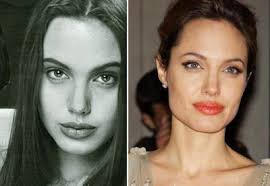


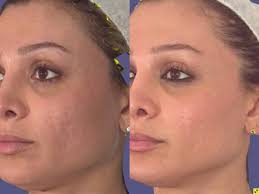
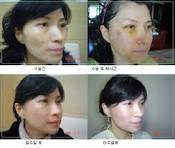
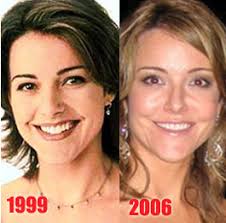

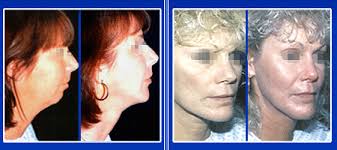
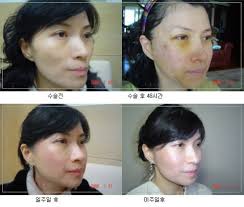

.
 self-consciousness if they possess “chipmunk cheeks” – very round, plump or “chubby cheeks”. If this is the case, you may be a good candidate for a cheek reduction (buccal fat removal surgery). Buccal fat consists of pads of fat that augment the lower part of the cheeks. If the fat extends to the lower part of the cheeks and the jawline, it can give an unfavorable appearance.
self-consciousness if they possess “chipmunk cheeks” – very round, plump or “chubby cheeks”. If this is the case, you may be a good candidate for a cheek reduction (buccal fat removal surgery). Buccal fat consists of pads of fat that augment the lower part of the cheeks. If the fat extends to the lower part of the cheeks and the jawline, it can give an unfavorable appearance.Fortunately, there are several options that are available to slim down your facial features. Buccal fat removal procedures help to reduce the size of your cheeks by removing excess fatty tissue which can create a more defined, sculpted look.
Note: Buccal fat removal should not be confused with facial liposuction (which can leave visible scars). However, in some cases, a mini-liposuction may need to be performed in conjunction with buccal fat excision (surgical removal). This may be the case where there is a large amount of fat to be removed. In most cases, the small incisions for the liposuction should heal in a few weeks.
Benefits
The benefits of buccal fat removal are generally cosmetic, as opposed to medical. The results include thinner and more defined cheeks which can lead to an enhanced appearance. This can be accomplished without other, more expensive forms of cosmetic surgery. The outcome, for many, can lead to a higher level of confidence associated with greater self-esteem.Types of Reduction
The two primary types of cheek reduction include the Buccal Fat Removal procedure and Facial Liposuction. For more details regarding liposuction, please see our article on liposuction proceduresPatient Characteristics
Ideal candidates for a buccal fat removal procedure are those who are over the age of 18 and in good health. They should also be psychologically well-adjusted and have realistic expectations regarding the outcome of the surgery. Smoking, drinking and certain medications should be avoided before and after surgery. This will also be discussed with your cosmetic surgeon during your consultation.Procedure
Buccal fat removal is generally and out-patient procedure that takes about one hour to perform. The procedure location options are: the cosmetic surgeon’s office surgical suite, an outpatient surgery center, or at a local hospital.First, you will be given your choice or your surgeon’s preference in anesthesia as discussed during your pre-surgery consultation. You may be given an oral sedative or valium prior to surgery which will cause initial relaxation. An IV (intravenous) for a saline drip to keep you hydrated, before and after surgery, may be inserted. This can also serve as means to introduce other medications, should the need arise. Having an IV inserted should only sting for a bit.
After the needle is injected into the vein, it’s pulled out and a little plastic tube (which is taped in place) remains in the vein. The IV can be placed in the crook of the elbow or the hand, depending on the size of your veins, in those respective locations.
The effects of the anesthesia are almost immediate, following the introduction of the liquid into the blood stream. If a sedative has been chosen, it will be administered through the anesthesia IV (either by hypodermic injection or through an additional drip mechanism.
Once the anesthesia has taken effect, the surgeon will make an incision (about 2 to 4 cm long) between the cheek and gums (maxillary vestibule), starting above the second upper molar towards the back of the mouth. The surgeon will use this incision to expose the large cheek muscle (buccinator muscle). The surgeon will then apply pressure (using his or her thumb) externally against your cheek right under your cheek bone causing the buccal fat to protrude through the incision. The necessary fat will be removed with forceps (or surgical tweezers), a small amount at a time. The total amount removed depends on the patient.
The surgical team then performs a standard sponge and instrument count and the incisions are closed with a non-dissolvable type suture. The doctor may also place an antibiotic-soaked piece of gauze between the upper molars and gums. A pressure dressing may also be placed around the patient’s head.
The patient is then wakened gently and brought into the recovery room where vital signs will be monitored. The patient’s release is dependent upon the individual but may take up to two hours. The face may feel tight and quite tender as the anesthesia wears off. A common reaction to anesthesia may also involve an emotional response.
Shivering may also occur and can be relieved with a warm blanket. Prescribed medication should alleviate any additional pain and discomfort. However, if you believe your pain to be out of the ordinary once you get home, call your cosmetic surgeon or the on-call staff immediately. You will need to be driven home, as you will not be able to see clearly and your judgment will be impaired due to the medications given.
Surgeons may also perform facial liposuction to remove fat deposits from the cheek when there is an excessive amount of fat (see: Overview)
Recovery
Note: These are recovery conditions that can normally be expected – but may vary according to your doctor’s instructions:Memory loss of the surgery and events leading up to it are normal, and are experienced by many patients. You will need plenty of rest and remember to keep your head elevated for 7 to 14 days (on the average). Having someone to look after you for the first few days following surgery is recommended. You will also notice that your face will look even more swollen in the first 3 days following surgery – but this will begin to dissipate after a few days. This should not alarm you – as swelling is normal for all types of facial surgery.
You will most likely experience some discomfort which can last for several weeks. Your diet will also be restricted as is the case with most oral surgeries. Rare or uncooked foods will not be allowed, since these can contain higher amounts of bacteria that can lead to infection. All fresh fruit and vegetables must also be washed. You may be instructed to rinse with an anti-bacterial mouthwash throughout the day. Never pick at, or probe the sutures or incision site with your tongue.
The pain medication prescribed by your cosmetic surgeon should relive any mild discomfort. However, if pus, redness, excessive swelling, and sever pain seem to plague you, immediately speak with your cosmetic surgeon or one of their qualified on call team members.
Temperature should be taken regularly because a spike in temperature is a sign there may be an infection present. Take your antibiotics in a timely manner AND continue taking them until they are all gone. Women should be aware that certain antibiotics may negate the effects of birth control pills.
Even though you may feel better, you need to rest for the first 3 weeks. So – no lifting heavy objects and, especially, no bending over to lift objects. Raising your blood pressure and heart rate through strenuous exercise can cause bleeding and additional injury at the wound site. Therefore you should avoid sports (especially contact sports) for 6-8 weeks (or however long your doctor suggests).
You may notice a change in your smile, tingling, the sporadic sharp pain, pulling, burning, cold or other unusual sensations. These usually subside within the first few weeks. Your end result is usually seen within 4 months.
Other post-operative events
• 1st Post-op visit: usually to remove sutures at 7 to 10 days post-op (sometimes earlier).• 2nd Post-op visit: check up usually at 3 weeks for exercise/activity recommendations (or release)
• Return to work: usually within 3-5 days – but depends upon type of work.
• Limited activity (desk job) with little or no amount of talking. For other types of work – consult your doctor.
Note: Sun exposure is not an issue – unlike many other facial procedure recovery instructions..
Risks Associated With Cheek Reduction Surgery
While buccal fat removal procedures tend to have a low risk factor, some issues can occur. The risk of infection is standard with all surgical procedures and can be treated by your doctor with antibiotics. Scarring can occur – especially if liposuction is incorporated in the procedure. An unbalanced appearance can also occur where one cheek is larger than the other. This can be corrected by further surgery.Damage to surrounding tissues is also possible (liposuction can increase this risk). Please be aware that as one gets older, thinning of the face may naturally occur. If too much buccal fat is removed, this natural thinning can eventually lead to a drawn, “scrawny” look. This may hold especially true if you are having this procedure done in your 20s or 30s. Of course, all possible risk factors should be discussed with your doctor, prior to surgery
Procedure Costs
What will it cost to remove those chipmunk cheeks forever? Expect a range from $1400-$5000 for the surgeon’s fee. Find out, at the consultation, what the surgeon’s fee covers and whether fees for the anesthesia are extra or if there are other fees.Lab fees, such as blood tests, and medications are usually extra. Costs will depend upon the experience of the surgeon, the region where the surgery is performed, as if the surgeon has his or her own surgical suite. With procedures performed in a hospital or under general anesthesia, with a certified anesthesiologist, prices are usually higher.
Unfortunately, due to it’s cosmetic nature, medical insurance won’t apply to these procedures. However, your surgeon may offer a variety of financing options that can make the procedure affordable to you.
.






0 comments:
Post a Comment